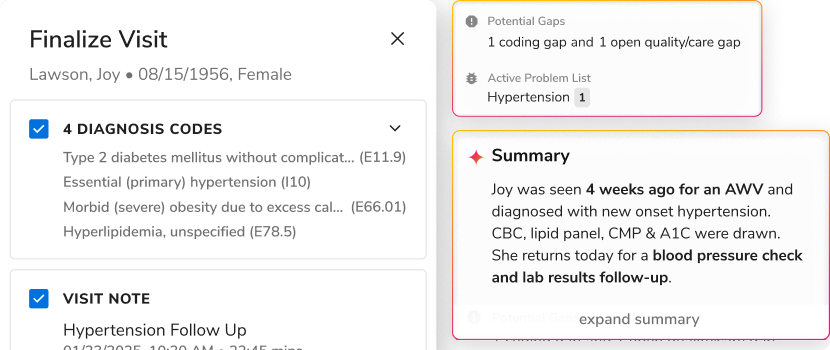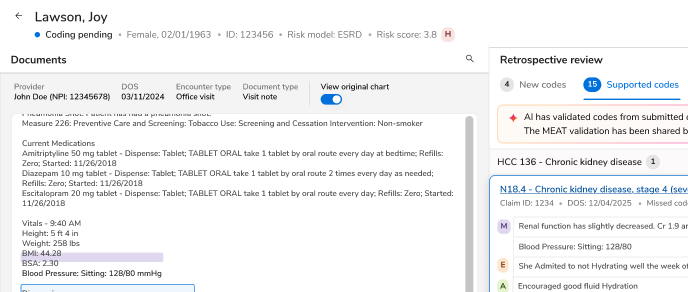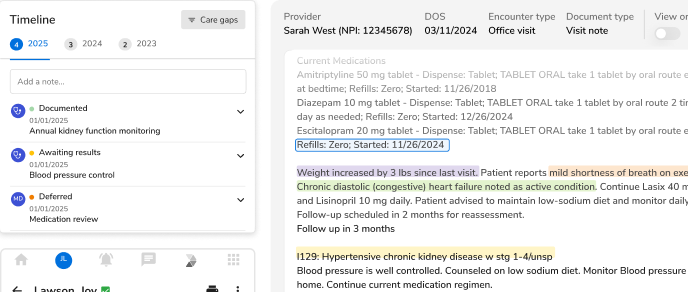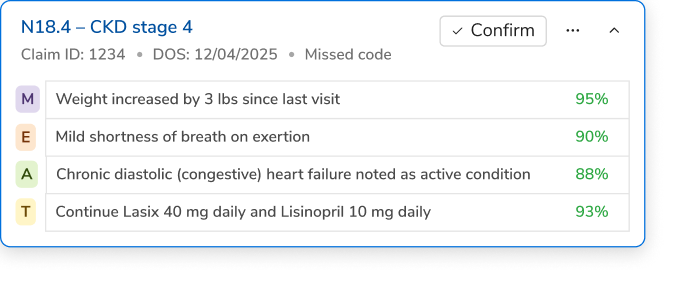The Next Big Thing in Healthcare: Predictive Analytics

Now, in a space as vital as healthcare, the predictive ability could be gold- be it diseases, the cost of care, or even the technology trends that the future would bring us. Considering the present-day scenario, the ability to predict the future cost of care, out of everything, could change the way we view healthcare. Especially as healthcare moves to put quality in care on the forefront, predicting the cost of care for every single patient could be a huge plus.
Most of the risk-models available today do have accurate predictive abilities at a population level. Although when it comes to an individual patient, the predictive algorithms go vague. And to drive efficiency in healthcare, it’s going to take a little more!
Drawback of Conventional Prioritization of Care
Consider two patients– John and Bob. They both work together at a retail firm and are affiliated to the same ACO. John is a 70-year-old male suffering from multiple comorbidities including Type 1 Diabetes, since he was 24, M.S., hypertension, diabetic retinopathy, and neuropathy. He is a frequent ED visitor with approximately eight visits in the past year. The overall cost of care for John in 2016 was $30,000.
On the other hand, there’s Bob. 40 years old, Bob is a diabetic patient with elevated blood pressure and hypertension. However, he has utilized fairly low amount of healthcare resources. For Bob, the overall cost of care in 2016 was just $5,000.
Given this difference in the cost of care and resource utilization, John was categorized as a ‘heavy-utilizer’ for the ACO while Bob became a ‘low-utilizer.’ The care teams prioritized high-risk John for high-priority care management– complete with frequent wellness visits, regular screenings, and follow-ups. Bob, a medium-risk patient with rare episodes, was dropped from the strict care regime, with fewer number of screenings and follow-ups every once in a while.
Fast forward to the next year. Let’s analyze the cost for both the patients at the end of 2017. While John’s cost of care declined to $20,000 due to effective care-management, Bob’s cost of care increased to $15,000. The overall expenditure of the ACO shot up and reflected poorly on many quality measures. Not to mention Bob’s deteriorating health conditions.
Challenges in Predicting Future Liabilities
Would it have been useful to know beforehand that Bob was going to be a “cost-jumper” in 2017? Had they known, could the care teams have taken some preventive steps to control this increase in Bob’s cost of care? Could the ACO have negotiated better contracts with payers, with prior knowledge of increase in their patients’ cost-of-care? Before we answer these questions, there’s another question standing our way.
Can we even predict the future cost of care for a patient using his historical data? If yes, then how accurate will it be?
Predicting future liabilities at a patient level is a very complex problem because we have limited information about every single patient. This problem is further magnified because no two patients are same. Each of them, broadly speaking, is a unique data point and the probability of finding a similar data point is very low. Also, we never know what events may occur that can escalate cost and resource utilization in a short period of time, which could lead to erroneous predictions.
One of the many ways to address this problem could be to break the annual cost of treatment into monthly costs. That could be followed by identifying the month with a sudden spike in the cost, and accounting for it in the model.
Another major limitation of the healthcare cost data is its skewness in the cost. Multiple studies have shown that a smaller proportion of patient population consumes the majority of the healthcare cost. This skewness in the data implies that there are fewer data-points for the “high-utilizers” to train the model, and that could jeopardize the accuracy of our prediction. Also, with chronic conditions on the rise, another challenge is predicting the combined effect of multiple chronic illnesses in a robust manner.
Disrupting healthcare with predictive analytics
The absence of any proper data models to predict future liability of individual patients made us investigate this problem further and deeper. Addressing most of the limitations mentioned above, we created a solution that could predict the future cost of individual patients with higher accuracy compared to the CMS HCC risk model. Innovaccer’s advanced data integration platform deploys a Hadoop-based Integrated Data Lake. The data lake can ingest multiple data sources, not just from CCDs, X12 837/835 files, HL7 feeds, but also right from actual EHR tables, and integrates these varying data sets together.
We integrated clinical and claims data from multiple sources, across different EHRs and payers and came up with comprehensive records that could represent different facets of a patient’s journey through healthcare. Using a total of 62 different cost and utilization features for every patient for the previous two years, the algorithm can estimates the patient’s cost-of-care for the upcoming year.
The Road Ahead
The possibility of predicting the future has always intrigued mankind. What seemed like a dream a long time ago has finally been made possible by combining technology and evidence. From helping providers use data-driven insights to target patients to projecting the cost of care, predictive analytics can change the dynamics of healthcare. All that’s needed is the training of data. We have the access to data, we have the potential, and most important of all- we have the will. Done well, the result can be an increase in affordable, quality care- another dream realized.
To learn how predictive analytics can lead you to a better, affordable healthcare, get a demo.
For more updates, subscribe.
Join Team Innovaccer at booth #649 this HIMSS ’18, from March 5 to 9, at Venetian Palazzo, Sands Expo Center in Las Vegas, and learn how we can assist you in delivering an efficient, data-driven healthcare.

.png)





.png)









.svg)
.svg)

.svg)

